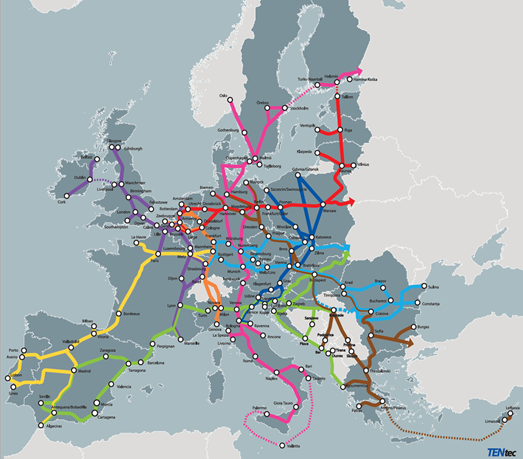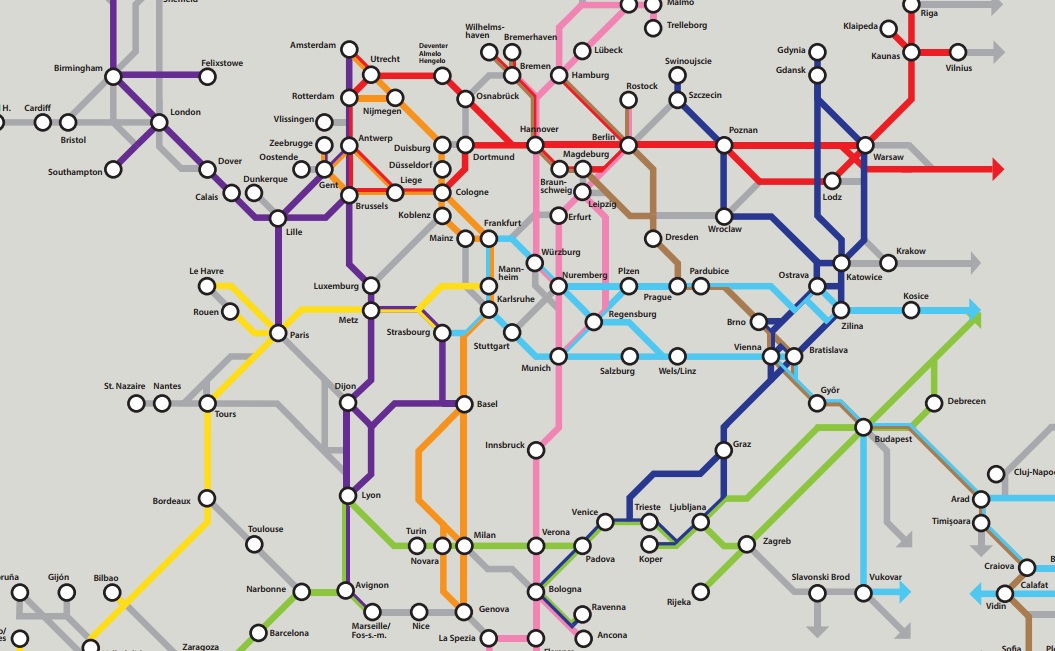Symbiotic network of logistic clusters
The Clusters 2.0 solutions applied in the living lab
Symbiotic Network of Logistics Clusters solution relates to Proximity Terminal Network (PTN) and the Cluster Community System (CluCS) providing the solution where they are built. In addition, it aims to use the technology of the New Modular Load Units (NMLU) to enable a swifter and easier shift from road to rail transportation. From an operational perspective the ambition is to implement a Slot Booking Application.
The main goals of the Symbiotic network of logistics clusters
The ambitions of Symbiotic Network of Logistics Clusters case are:
- The integration of Logistics clusters into a high performing synchromodal transportation network
- A shift towards low emission transport modes and consolidated freight management between logistics clusters following a demand-driven approach.
Following the ambitions, efficiency at logistics clusters should be improved through:
- A framework for inter-cluster cooperation along intermodal transport chains
- Network visibility across clusters on freight streams
- Establishment of a dynamic transaction platform for collaboration resulting in cargo pooling and optimising asset usage
- Development of added-value services of enhanced collaboration across logistics clusters
- Establishment of new roles and governance models for smart logistics clusters including all stakeholders.

TEN-T map
The business cases
The Living Lab is focused on two business-related scenarios:
- Intermodal transportation development in Dourges, Duisport, Bologna, Plaza
- Aircargo handling at airports in Athens port, Brussels Airport, Heathrow and Trelleborg.
The living lab will test whether the logistics clusters in the consortium can attract shippers as new members to share their data to develop new and to strengthen existing connections between clusters. In this sense, the living lab will prove that European shippers, LSPs and 4PLs can be convinced by regional neutral bodies to bundle their volume in a regional TEN-T hub.
Additionally, a Dynamic Terminal Management Platform will be tested to synchronize cross-company processes in terminals, meeting the challenges of non-synchronised activities through different applications. This includes a slot booking app, a community portal, a visibility app, and a real-time status application.
For the Intermodal scenario, the focus is on the way in which logistics clusters can act as independent actors within the supply chain to collect transportation flow data of shippers. On an aggregated level these flow data should enable intermodal operators or LSPs to strengthen existing intermodal connections between the logistics clusters. In an ideal case, the aggregated volumes should even be so large that new intermodal connections between logistics clusters can be developed.
For the Aircargo scenario, the objective is to create a visibility solution which will allow the different actors in the air cargo supply chain to collaboratively plan, execute and track their shipments through the data-sharing platform.


